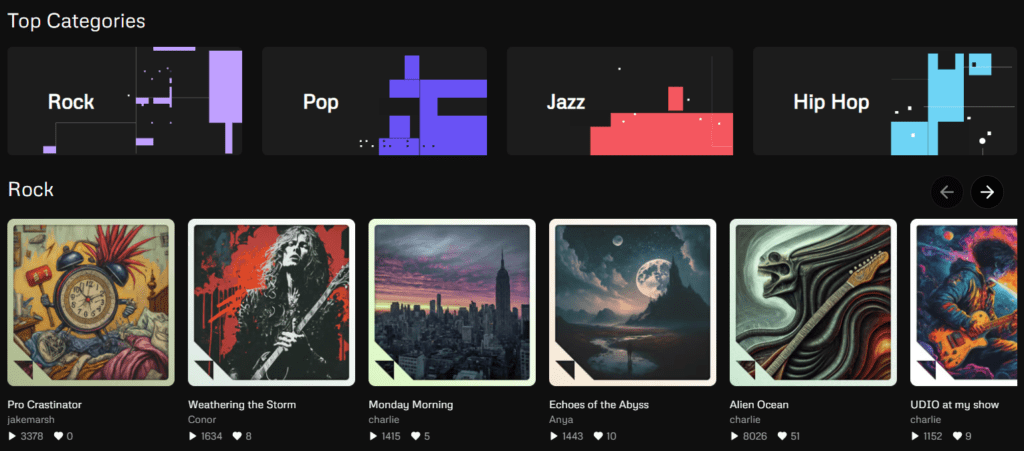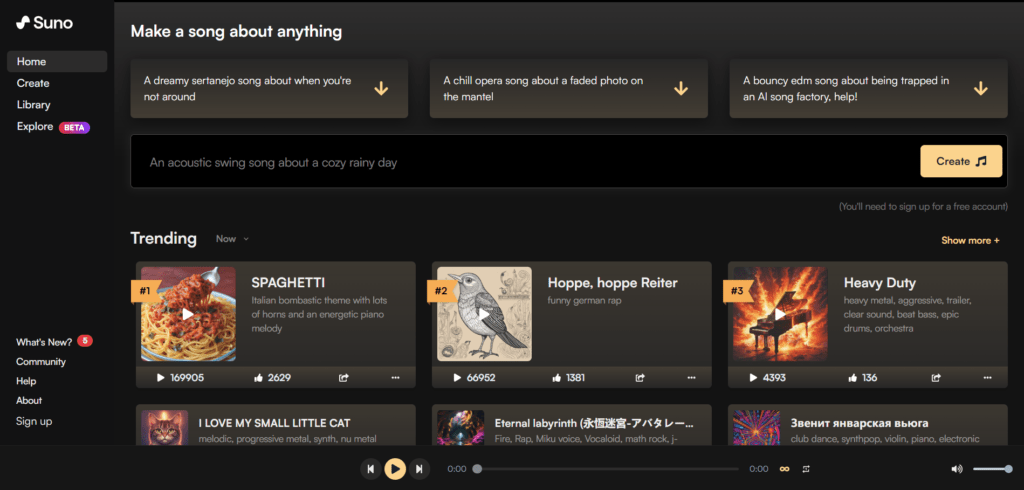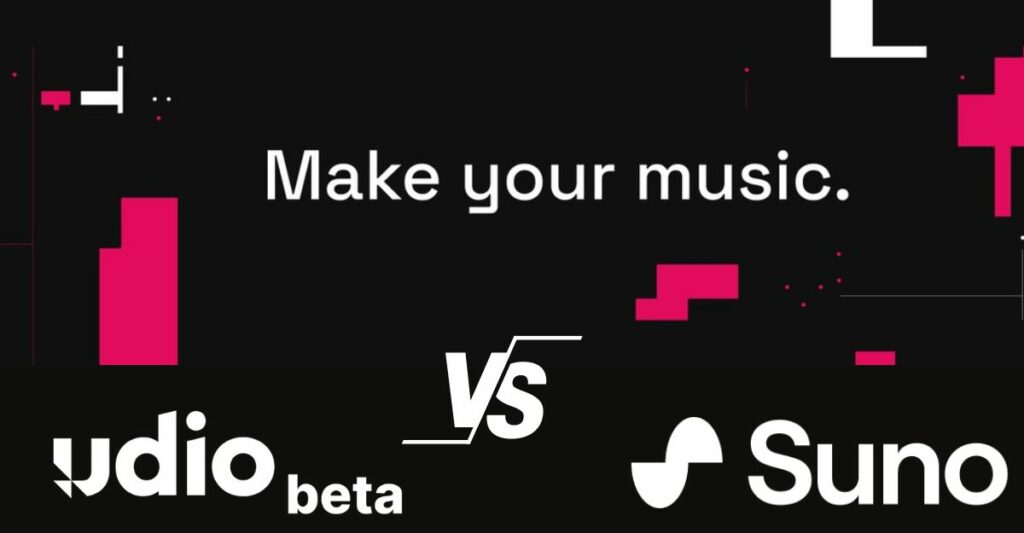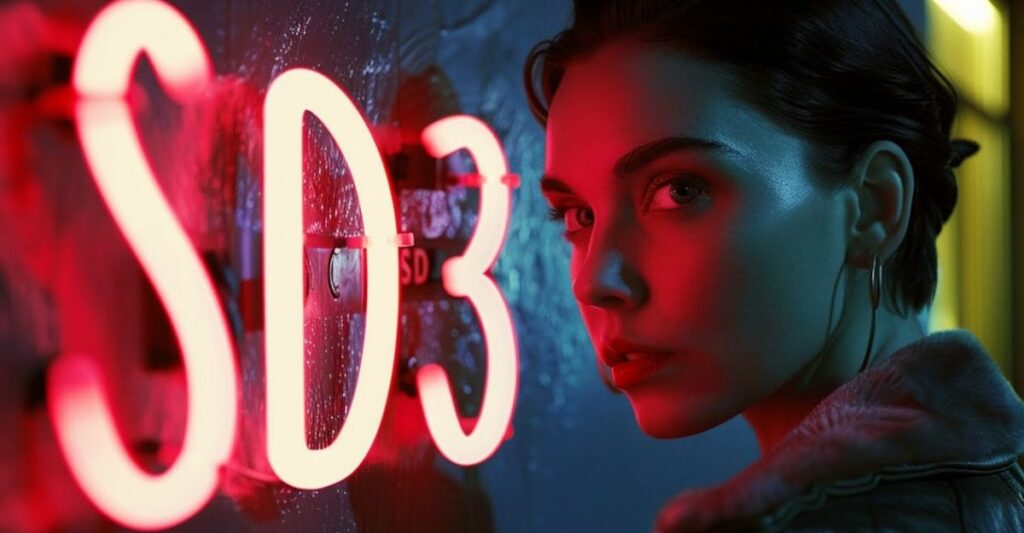The landscape of digital music is on the cusp of a paradigm shift with the introduction of Udio, an AI-powered music creation platform that promises to elevate the art of music production to new heights. As the music industry eagerly awaits the release of this innovative tool, let’s delve into the features and capabilities that make Udio a game-changer.
Introduction
In late March, the music generation model Suno AI captivated the global audience with the release of its V3 version, which was lauded for its realistic music quality, sparking a wave of DIY music creation among netizens. Recently, rumors have been circulating about the imminent launch of a mysterious product dubbed the “music version of Sora,” which is said to outperform Suno AI significantly.
Bloggers with access to this new tool, speculated to be Udio, claim it to be twice as impressive as Suno, suggesting that AI music is on the verge of becoming mainstream. This has led to a surge of online requests for invitation codes. However, with a lack of official information and the ongoing praise from bloggers, there is speculation about whether this is a marketing ploy. The true capabilities of Udio will only be confirmed after its official release.
Introducing Udio, an app for music creation and sharing that allows you to generate amazing music in your favorite styles with intuitive and powerful text-prompting.
— udio (@udiomusic) April 10, 2024
1/11 pic.twitter.com/al5uYAsU5k
A Glimpse into the Future of Music: Ethan Mollick’s Experience with Udio
Ethan Mollick, a renowned figure in the music and tech industry, shares his firsthand experience with Udio, the latest AI music-making sensation. He delves into the tool’s remarkable ability to generate compelling lyrics and intricate melodies, as demonstrated by its creation of a catchy late 90s ska tune with a twist—lyrical wit about the “skapocalypse.” This account offers a unique perspective on the potential of Udio to reshape music composition and offers a sneak peek into the innovative possibilities it presents for musicians and creators alike.
I had early access to Udio, the new AI music-making tool. It is impressive at generating lyrics & complex music, with interesting voices, from a prompt
— Ethan Mollick (@emollick) April 10, 2024
Here is a "catchy late 1990s ska song about the end of the world." I was amused that it included "skapocalypse" into the lyrics pic.twitter.com/tKqTo3u2jJ
Another musician’s review:
I've been playing with @udiomusic for the past week, and I've been mind-blown by it.
— Max (@maxescu) April 10, 2024
Now it's available for everyone… for FREE! 🤯
Listen to samples: pic.twitter.com/WLNuhIYGR3
Unlocking the Magic: Udio’s Surprising Advantages
Groundbreaking Text-to-Music Functionality
At the heart of Udio’s appeal is its unique text-to-music functionality. Users are no longer bound by the complexities of traditional music composition; instead, they can simply input a description of the style and mood they wish to convey, and Udio’s advanced AI algorithms will generate music that fits their vision. This intuitive approach democratizes music creation, empowering both seasoned musicians and novices alike to craft their own masterpieces.

Diverse Music Genres and Styles
Udio’s versatility is another aspect that sets it apart from its predecessors. The platform boasts an extensive library of music styles, spanning from classical to contemporary, and from Eastern to Western genres. Whether users are looking to create an upbeat electronic dance track or a soulful blues melody, Udio’s vast selection ensures that there is something for every musical taste. This diversity not only caters to individual preferences but also fosters a rich and varied musical landscape.

Cross-Cultural Music Composition
In a move that breaks down barriers and promotes inclusivity, Udio supports music creation in multiple languages. This feature opens up new avenues for expression, allowing artists to explore the nuances of different linguistic and cultural contexts. The result is a more dynamic and globally resonant musical experience that transcends borders and unites creators from around the world.
Robust Music Editing Tools
For those who desire more control over their compositions, Udio offers a suite of powerful music editing tools. These allow users to fine-tune their tracks, add personalized intros and outros, and craft longer, more cohesive pieces. The platform’s user-friendly interface ensures that even complex editing tasks can be accomplished with ease, making the journey from concept to finished track smoother and more enjoyable.
The Powerhouse Team
The success of Udio is not just a product of its technological prowess but also the passion and expertise of the team behind it. Comprised of top AI researchers and engineers from Google DeepMind, the Udio team is dedicated to pushing the boundaries of what’s possible in music creation. With the backing of influential artists such as @iamwill and @common, Udio’s potential to transform the music scene is undeniable.
The Future of Music Creation
While Udio’s version 1 model is already impressive, the team is not resting on its laurels. Continuous improvements are being made, with the aim of extending sample lengths, enhancing sound quality, and expanding language support. The ultimate goal is to develop a tool that offers unparalleled controllability and becomes an indispensable resource for both professional musicians and enthusiasts.
AI Music Evolution: Suno AI and Stable Audio 2.0
The AI music industry is experiencing a significant surge in innovation and development this year, with groundbreaking tools and models emerging that are reshaping the way music is created and consumed. Among these advancements, Suno AI has made a notable impact with its highly praised music generation capabilities, allowing users to craft their own tunes with remarkable realism.

Suno AI’s success is not an isolated incident. Stability AI has also made waves in the AI music scene with the introduction of their latest model, Stable Audio 2.0. This new model stands out by enabling users to create audio pieces that extend up to three minutes in length, which is a significant increase compared to the two-minute limit currently supported by Suno AI. This extension in duration is a notable achievement, as it provides musicians and creators with a broader canvas to express their artistic vision.

Suno AI’s model has been celebrated for its user-friendly interface and the quality of the music it generates. It has opened up opportunities for amateur and professional musicians alike to experiment with AI-assisted music creation, leading to a surge in creativity and the exploration of new sounds.
Stable Audio 2.0, on the other hand, pushes the boundaries even further. With the ability to produce longer tracks, it caters to more complex compositions and offers a greater degree of flexibility for artists. This model is a testament to the rapid progress in AI music technology and the growing potential for AI to become an integral part of the music production process.
Conclusion
The emergence of Udio signifies a new era in music creation, where technology and artistry unite to unlock new possibilities. With its intuitive interface, diverse genre offerings, and powerful editing capabilities, Udio is poised to become the go-to platform for anyone looking to express themselves through music. As the world awaits the official release of this revolutionary tool, one thing is certain: the future of music is about to become a lot more accessible and a lot more exciting.




